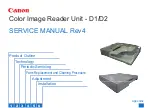
file:///C|/Documents%20and%20Settings/POpitz/My%20Documents/temp/UnidenManBeta/DecipheringTrunkedSystems.html
P25 Systems
These are identified in the RadioReference database as Project 25 Standard . If the System
Type line says anything else, then it is not a P25 system (even though it might have some P25
channels).
LTR Systems
These systems are identified as LTR Standard in the system type.
Motorola Systems
There are several subcategories of Motorola systems, but they will all have some form of
Motorola in the system type: Motorola Fleetnet , Motorola Smartnet , Motorola Smartzone ,
etc. Once you have identified that it is a Motorola system, you can check the system
frequencies to confirm its subtype:
●
Motorola 800: all of the frequencies are in the 800 MHz range
●
Motorola 900: all of the frequencies are in the 900 MHz range
●
Motorola UHF: all of the frequencies are between 400 and 512 MHz
●
Motorola VHF: all of the frequencies are between 100 and 200 MHz.
EDACS Systems
There are three subtypes of EDACS systems:
●
EDACS Wide: identified as EDACS Standard in the system type.
●
EDACS Narrow: identified as EDACS Narrowband in the system type.
●
EDACS SCAT: identified as EDACS Scat in the system type (these systems operate on
a single frequency).
Conventional Systems
This fifth type of scannable system is a general catchall for all non-trunked systems. See
Non-scannable Systems
There are several system types that cannot be monitored with a scanner, either because the
systems use proprietary digital formats that are not licensable by scanner manufacturers, or
because the systems are not in wide enough use to make it cost-effective for manufacturers to
file:///C|/Documents%20and%20Settings/POpitz/My%20Doc...nts/temp/UnidenManBeta/DecipheringTrunkedSystems.html (3 of 5)4/7/2009 10:08:39 AM
















































